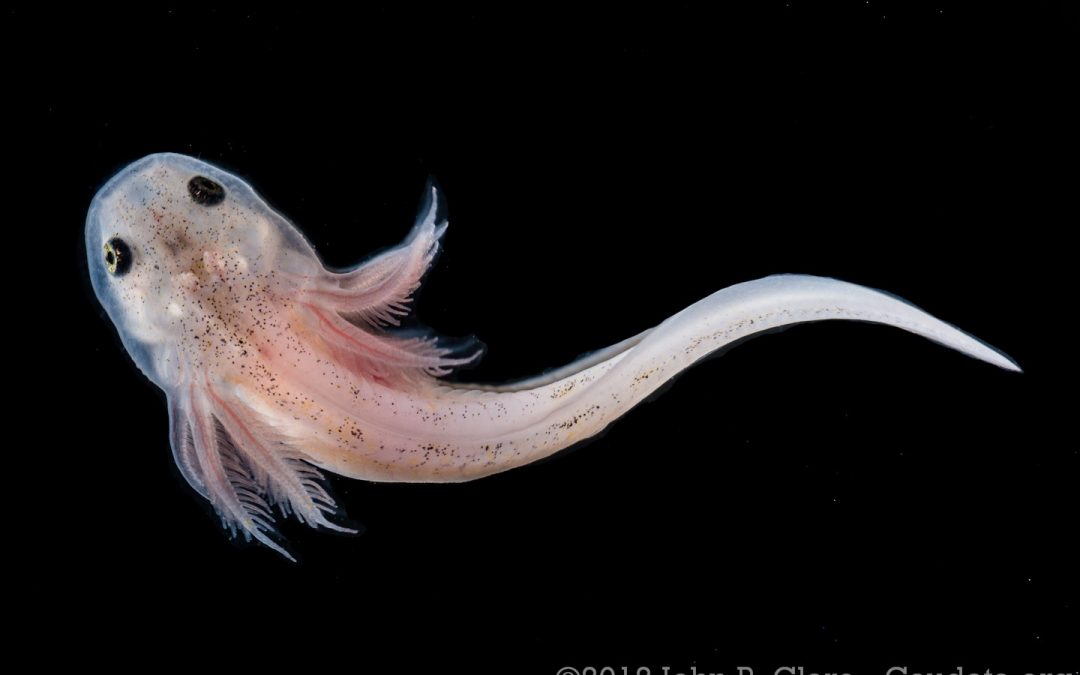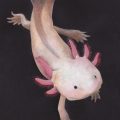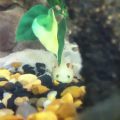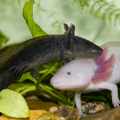Table of Contents
A baby axolotl, Mexican “walking fish” or the Mexican salamander, is very different from a typical aquatic animal. You might say that a baby axolotl is a fish, however, it is not really a fish at all. It is amphibian in nature and considered to be part of the salamander family. Here is the big twist, although they are classified as amphibians, the adult species of the baby axolotl would remain aquatic long after developing legs or even if they are not babies anymore.
Most baby axolotls can grow up to 30 centimeters, while salamanders can grow from 15 up to 45 centimeters long. When these baby axolotls grow up, they still maintain their cuteness through their lidless eyes, four long, thin limbs, as well as the wide head. Aside from this, these creatures also have a filament-line gill stalk that would stick out from the back of their necks.
Because of their small number, most of the baby axolotls live in Lake Xochimilco. Adults of the baby axolotls breed are listed under the annual Red List of threatened species of the International Union for Conservation of Nature. It is a sad fact that most of the baby axolotl’s population died out when the Lake Calcho, its Mexican native habitat, was drained due to a flood. In this light, a lot of baby axolotl and their adult counterpart were killed and the remainder of their population lived in Lake Xochimilco.
How to Set – Up Your Baby Axolotl’s Aquarium
The waters of the Mexican lakes is the native place of the baby axolotls. This demands that this species has a number of special needs that you need to address when setting up their habitat. It is a known fact that baby axolotls could grow very large, so you need to give them a lot of room to live healthily and happily.
It is a known fact that an individual axolotl is bigger than any other water animals. With this in mind, one animal should have no less than 10 gallons of water inside its tank. However, it is a key fact that in keeping a salamander or any other household pet, you should give a big habitat for it to dwell on.
If you plan to keep two baby axolotls, it would mean that you would have twenty gallons of water, thirty if you want three, and so forth. Do not confine your pet in confined places. It is a known fact that young breeds like to bite each others’ gills, this would inflict serious damage and injury to their housemate. Remember, you need to give a lot of room for your pets to move around without bumping into each other. This would reduce the risk of your pets hurting each other.
Substrate Requirements
Your baby axolotls or any other salamanders could be damaged due to inappropriate or even poor quality substrates, and this condition could also be fatal for them. It is very crucial that you give the best substrate that is suitable for your baby axolotls. Remember, both adults and baby animals feed through water sucking using their mouth. This method could cause your pet to accidentally ingest particles from any substrate. When this incident happens, there are serious consequences such as impaction. It is a rule of thumb that substrates are not really a priority when you keep an axolotl. You can leave the bottom of your tank bare, this could mean that you can avoid the aforementioned problem. But, please note that bare-bottom tanks also have its con. Your pet could be distress if it can’t grip the surface of the tank properly and walk there properly. Make sure that you have the necessary and appropriate substrate for your pet. In this essence, we can say that sand is the best and safest choice for your pet. The particles of this substrate are very small and won’t cause any problems even if your pet would accidentally ingest them.
One thing that your baby axolotls like to do is play and dig around the sand. Do not be scared, this playfulness is very helpful with their well-being. Playing around the sand would make them jolly and won’t become distressed. Aside from that, we want you to put hiding spots, place plants, and decorations inside the dwelling place. When adding these things, it is best that you are using a sand substrate. null
Filtration Requirements
Experts suggest a weekly change in water. The change should be around 20% using a high-quality filtration system. The reason for this task is that baby axolotls are very sensitive in terms of water conditions. Aside from this, we should point out that baby axolotls can survive in still waters, you need to find a filter that would not be able to disturb the water flow in the tank. There are some filters that could keep you water still, just like some external canister that it sized with flow-spreading outlet. If you can’t control the filter in your aquarium, you can put some plants inside. Plants will help you to block the extra movement and would soften the currents.
Lighting Requirements
Due to their native Mexican habitat, your baby axolotls are used to having low-lighting conditions. Just like any other amphibians, your pet won’t need any special lighting in the aquarium. Your pet could be stressed out from bright lights because they do not have eyelids. Some aquatic hobbyists would prefer to have decorative lights to enhance the environment and view. You can also follow this path, however, this could still cause stress, however, your pet could get used to the new artificial lights in due time. You can also add hiding spots and decorations to ease the process. But, if the distress continues, you need to adjust the lighting to prevent any more stress. A lot of stress could cause illness for your pet. Due to their habitat, living the bottom of the water, your pet loves to play hide and sick in live plants like anubias, java mosses, and hornworts. This is a good chance to add the decorations inside the tank. Your pet would also love caves and use it as hiding spots. You can also get PVC tubing, shop-bought caves decorations and even plant pots could be a great hiding place for your baby axolotls.






 Author and long-time animal lover. Sharing knowledge on pet care through experience and the written word.
Author and long-time animal lover. Sharing knowledge on pet care through experience and the written word.